Many friends who have watched “Ready Player One” believe that in the future, VR glasses can use powerful computing power to present a magnificent, blurred virtual and real game world; in the movie “The Matrix”, humans also They entered the “Matrix” through future technology similar to brain needles; in the “Avatar” movie, human beings entered the body of the aborigines on the planet Pandora through consciousness transfer and gained control over the body.
This is the ultimate shift in consciousness that science fiction movies present to us.

Thinking about it carefully, the reason why this kind of scene can appear is inseparable from the initiative in my opinion, and has a strong result orientation: “Ready Player One” used VR glasses to successfully repel the enemy; “The Matrix” In the middle, the savior and the machine leader jointly defeated the virus, and finally brought temporary peace to humans and machines; “Avatar” uses the more powerful Na’vi to fight the invaders.
It is not difficult to find that a certain reversal can be achieved with the help of these, not to mention there is another key winning factor: the efficiency improvement brought about by the circulation of consciousness ultimately increases the possibility of success.
These movies reflect our imagination of future technology, which is to achieve the goal through some kind of “flow” operation, but it is too early to discuss this topic. And some scenes may never appear in real life, even if the metaverse-like scenes of VR glasses are still a long way from today’s technology.

But in fact, the word “circulation” sounds very mysterious and it is not difficult to find application scenarios. For example, the mobile phone used every day may have the function of “circulation”. Digital terminal manufacturers are also intentionally or unintentionally when launching new mobile phone products, emphasizing one of the An important application scenario is multi-screen linkage.
To put it simply, this is a cross-screen data transfer service through the same brand/different brand.
The core of the flow operation between different devices is the system.
Multi-screen collaboration is just an export based on the Internet of Things. Although different screens are connected in series, the logic of different product brands is still fundamentally different.
Especially the brands with strong ecological environment represented by Apple and Huawei, the former has formed a unique multi-screen interconnection application scenario through a very stable ecosystem; while the latter is more radical in my opinion, using the distribution of Hongmeng There is a gradual trend of decentralization, and rising stars such as Xiaomi and vivo are also constantly exploring.
Apple: Every hardware is at the center
In fact, the multi-screen interconnection function has appeared on Apple devices for a long time, but it does not have such an intuitive name, but is called AirPlay. It wirelessly transmits pictures, audio and video on iOS devices such as iPhone, iPad and iPod Touch to devices that support AirPlay through WiFi.

This is a wireless technology developed by Apple, which can wirelessly transmit pictures, audio, and video on Apple mobile devices to devices that support AirPlay through a wireless network. Projecting the screen to a device that supports the AirPlay protocol can be achieved as long as it is in the same local area network. In addition, because of its own protocol, it has strong anti-interference, but the disadvantage is the native screen projection protocol used. In addition, Apple devices understand everything , only limited to use between your own devices.
As a former Apple Family Bucket user, AirDrop is one of the functions I use most frequently in my daily life. Just pull down to open the AirDrop option to transfer files to the corresponding device. This function does not require very Harsh network environment can realize file transfer.
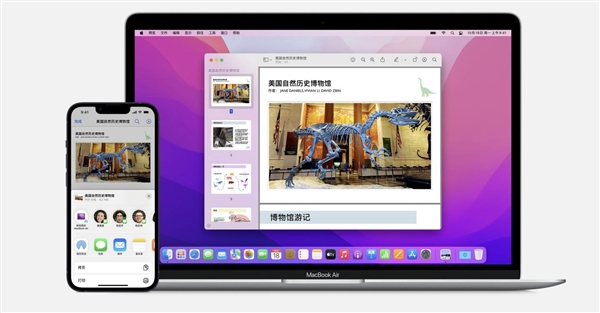
With the enrichment of the hardware ecosystem and the gradual improvement of the Apple OS system, the system interaction interface between different devices has become more and more similar, but in fact, the professionalism that Apple has given to each hardware device has not decreased at all.
When using Apple’s family buckets, such as Apple watch, Mac, and iPad to interact with each other, Apple’s multi-screen interconnection is actually creating a center, which is completely different from Huawei’s Hongmeng distributed system logic. The former pays more attention to hardware products usage scenarios rather than decentralization.
For example, in addition to the Apple computer, all the devices I have at hand are Huawei, which seems to outsiders to have a sense of separation. In fact, it is not the case. Using a Mac computer to retouch or edit pictures is better than Windows PS and Da Vinci. At one level, I encountered a flashback of lost material in the former, and the editing logic of the latter is obviously not suitable for beginners like me.
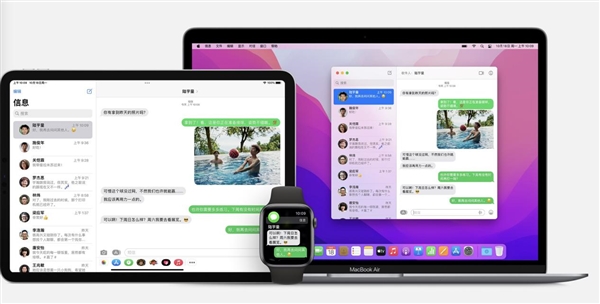
For this kind of work, Apple’s multi-screen synergy advantages are reflected. For example, the second screen can be easily expanded through the side-by-side function launched on the iPad; the continuous interoperability of cameras and the use of Apple Pencil to use the iPad as a hand-painting board are all It is an auxiliary notebook for work; in addition, users can easily sync photos from the phone to the computer through the same iCloud account.
It is not difficult to see that Apple’s approach to hardware products is specialized in the technology industry.
Like the continuous intercommunication of sketches, the synchronous display of text messages and the ability to reply, make calls and FaceTime functions on any device, the synchronization of this kind of notification information is actually to let you focus more on the device you are using, not in the true sense. of interconnection.
At this year’s WWDC, Apple released a usage scenario that uses the iPhone lens to combine with the Mac. This is actually to strengthen the use scenario of the Mac. This way from the iPhone lens to the computer is “one-way”, not Huawei’s multiple. The camera positions are connected to each other using scenarios.
Apple pays more attention to assisting the products users are currently using through other hardware products, and pays more attention to the mutual cooperation between functions.
Huawei: De-centralization of hardware
As I said before, in addition to Apple computers, I am actually a full-fledged Huawei family bucket user.
From routers, smart watches, to mobile phones, tablets, smart speakers, and true wireless headphones are all Huawei. In fact, in the interconnection between hardware products, whether it is Huawei or Apple, or even Xiaomi and vivo, the functional “connection” is similar. For example, you can make calls on a smart watch; you can use smart speakers to enhance the sound quality when watching videos on a tablet; you can use your phone or tablet to control some home appliances.
If there is only such a simple Unicom, I may not be a loyal user of Huawei.
Because I think that Huawei’s current Hongmeng operating system is actually “decentralizing” hardware devices, which may be a manifestation of future personal devices.
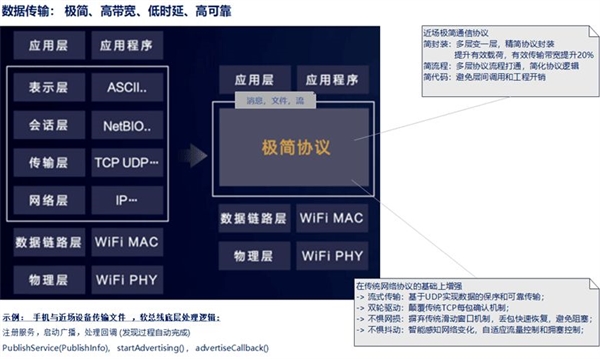
The bottom layer will start to simplify the system and APP Source: network
To understand Huawei Hongmeng’s multi-screen collaboration, you need to start with the underlying logic. In my opinion, the cooperation between the bottom layer and the devices of the Hongmeng system is actually a set of logic, that is, it is necessary to reduce the burden from the bottom layer of the system, so as to achieve high transmission and low delay under the current transmission conditions, of course, the resource occupation of the hardware system is also important. It can’t be too high, and it has to be able to run Android software.
As we all know, the Android system is written based on Java. Although it is a common language, it has the characteristics of low writing difficulty and good circulation. However, the Android system cannot “connect” with the underlying system unless it is rooted, and it needs to run in a virtual machine. , so that the system reads back and forth, and the Android system “can’t read” the JAVA high-level language needs to be translated with the help of a virtual machine, so there will be fragments in the continuous reading process, so it will take up a lot of system RAM resources, directly causing the system to freeze .

Application flow part of the demo image source: network
The Hongmeng Ark compiler uses C and C++ languages to write apps, cancels the ART virtual machine, and directly compiles it into binary machine code. The advantage of this is that it does not need to run the virtual machine again, and the execution efficiency will be improved. In addition, because the microkernel in its own architecture includes the necessary functional modules of the operating system and has the highest authority, if there is a problem with other modules, it will not affect the operation of the entire system.
Of course, the software operation efficiency is solved, and with the help of the low latency efficiency of the microkernel, it actually provides a good driving environment for the “flow” of applications. Huawei described the “distributed soft bus” as follows:
“The mission and goal of the HarmonyOS system is to connect different devices in series and become a universal language for devices, allowing one system to connect all Internet-connected smart devices to achieve the ultimate goal of interconnecting everything. One of its core capabilities is the distributed soft bus that allows multiple Devices are integrated into one device, bringing a smooth connection experience with high throughput, low latency, and high reliability within and between devices.
Through the high-bandwidth, low-latency, and high-security features of a minimalist protocol, the problem of interconnected “response” between different devices can be solved.
Of course, the above is a bit too much. If you think about it, it is: with the help of the Hongmeng operating system, after the application is transferred, the mobile phone or tablet is equivalent to the host.
For example, the most commonly used devices at hand are Huawei mobile phones and Huawei tablets. The division of labor between the two devices is also very clear. The mobile phone is used as a game device, but sometimes the screen is too small. At this time, the screen of the mobile phone can be mapped to the tablet through multi-screen collaboration. Operating through the large screen is sometimes more enjoyable. it is good.
In fact, this function is now followed by Xiaomi and vivo, which is not uncommon. In fact, this is similar to the screen projection function.
The real application flow is rare.
This is fundamentally different from multi-screen collaboration. For example, when the Huawei P50 Pro is used to map the multi-screen collaboration function to the tablet, the phone is in a state of off-screen but not locked. Pressing the power button at this time will directly cause the tablet connection to fail. , and using the application transfer function is equivalent to the mobile phone separating a part of itself into the tablet, and the computing power actually comes from the mobile phone.
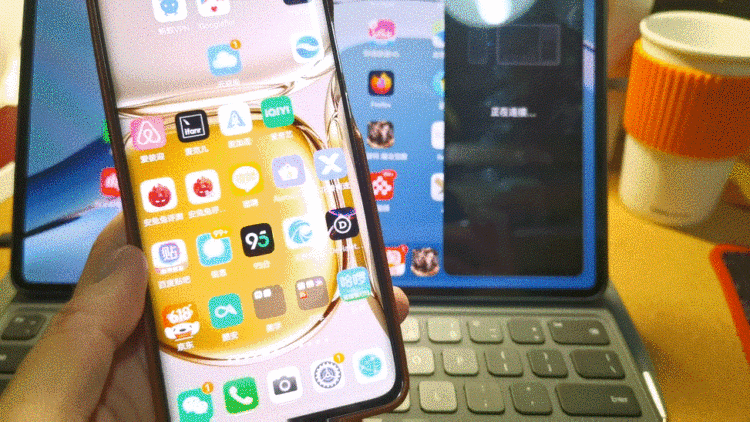
The multi-screen collaboration function will dim the phone screen, but it will not lock the source: Pinwan lzh photo
Taking “Honor of Kings” as an example, the multi-screen collaboration is equivalent to mapping to the tablet, and the tablet screen and the mobile phone are synchronized; and when the application is streamed to the tablet, the phone can continue to be used normally, or it can be locked, and the game on the tablet can be streamed to the tablet. , just like a game installed in a tablet, with almost no lag.
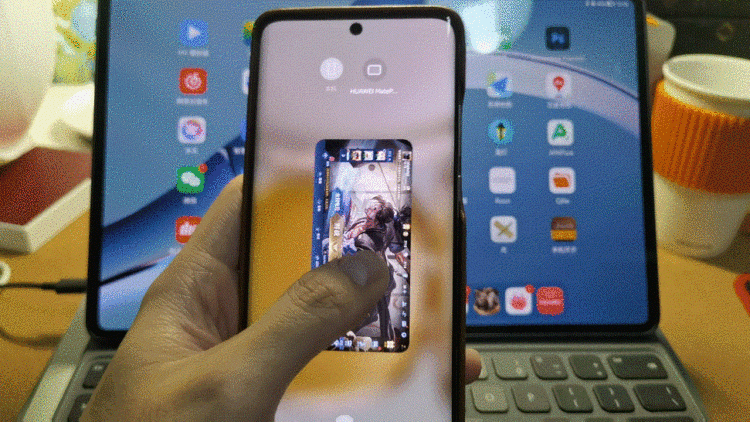
Source of demo image of application transfer function: Photo by Pinwan lzh
In addition, the flow of applications is bidirectional, and the software on the mobile phone can be “transferred” to the tablet; conversely, the application on the tablet can also be “transferred” to the mobile phone.
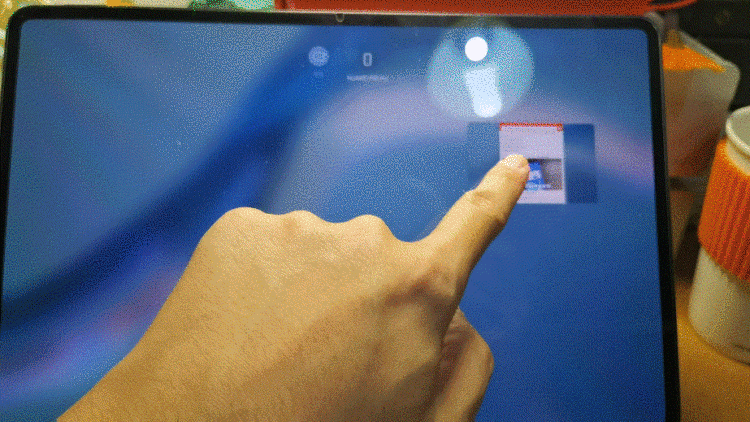
You can also “transfer” the application on the tablet to the mobile phone Source: Pinwan lzh photo
In addition, there is gossip that Hongmeng 3.0 will strengthen the application transfer function, and at the same time, it will use the computing power of the transferred device, which is equivalent to the Snapdragon version of my mobile phone. By transferring to the Kirin 9000 device, I can use the computing power of Kirin to solve the problem of heat generation. , I have to raise both hands to agree.
However, the current problem is that the number of applications that support “transfer” is limited, especially the number of games is pitifully small. It only supports “Light Encounter” and “League of Legends” in the previous demo, while the NetEase Krypton Gold “Harry” I was playing Potter’s Magic Awakening is not supported and can only be completed through multi-screen collaboration.
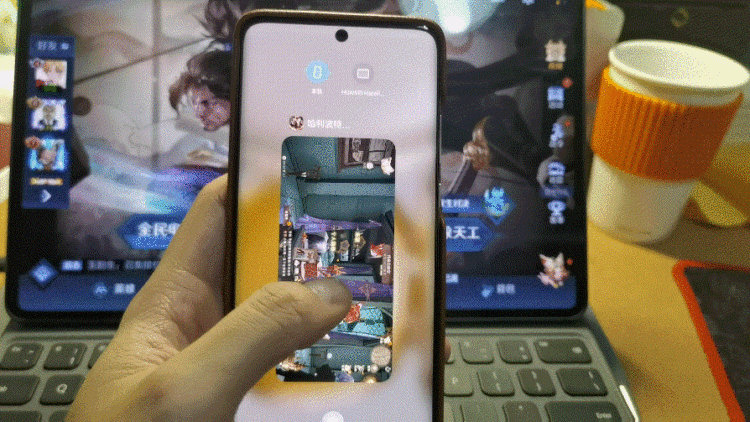
The number of supported games is not ideal Source: Pinwan lzh
Of course, in practical applications, for example, cutout flow can satisfy most of the retouchers. Although after cutout, it can be streamed to a tablet and other devices to continue the application, but it still needs to download at least the service card; The tablet comes with it), it would be better if it was integrated in the system.
In summary, application circulation is the core of Huawei’s Hongmeng system, and it is not difficult to see its layout and “ambition” for the future system.
Other manufacturers: Xiaomi pushes Miaoxiang Space, vivo and Apple users make friends
After Huawei, Xiaomi also launched Miaoxiang Space. Whether it is UI or function, it is similar to Huawei’s HyperTerminal. However, because of the lack of Xiaomi and Windows products, it will not be demonstrated here.
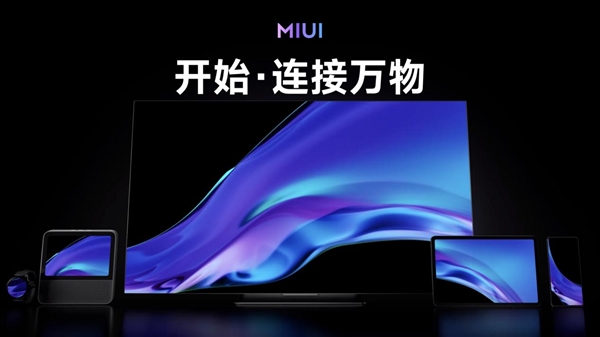
For Apple and Android users, it is not easy to connect to each other. It seems that there is an unbreakable wall between the two mainstream platforms, but there are still domestic manufacturers trying to break the gap between each other. For the mobile ecosystem, can have a positive effect.
Early users can use Android’s native Android file transfer and SmartFinder from Hammer Technology.
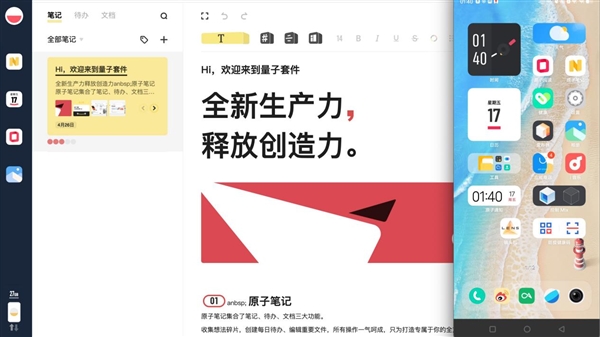
Vivo, on the other hand, has gone a step further and achieved Mac-side login through the “Quantum Platform” kit. However, it is “dwarfed” in terms of functions. It only provides basic multi-screen collaboration functions, which are similar to Huawei’s functions. However, when using the mouse to slide the screen on the Mac desktop, the mobile phone does not have a dark screen. It can only be used for mapping functions. In addition, there is a high delay, which directly affects the doubts of Mac Apple users about Android adaptation, and there is still a long way to go in the future.
From the current stage of development, with the gradual popularization of 5G and the popularization of WiFi6 and WiFi6+, the overall increase in network speed downlink rate and uplink rate provides a stable guarantee for near-earth transmission. Just thinking, are 5G and WiFi6 really useful?
If we comment on it today, based on the multi-device linkage scenario of the Internet of Everything proposed by mobile terminal manufacturers, high bandwidth, high bandwidth and low latency are absolutely necessary conditions.
Whether it is for consumers or manufacturers, there is no doubt that the higher the wireless protocol specification, the better the experience. In fact, judging from the multi-screen interconnection experience of these manufacturers, the most perceptible part is actually the delay. This requires the upstream wireless protocol developer and the downstream manufacturers to jointly solve it. It will not be possible to achieve 0 delay like “Ready Player One” overnight. technical.
Having said that, in fact, multi-screen collaboration seems to be a matter of several screens, but in fact, it shows the strength of manufacturers behind it. In addition, even if there is software optimization strength, it is futile without product line support. For consumers, in fact, more priority will be given to the linkage of equipment of the same brand. In the future, there will be fewer players in the IoT core track, and for those who do not have any features, they will only follow other oligarchs to “reproduce” the function. Manufacturers, their comprehensive competitiveness will only get lower and lower, and it does not rule out the possibility of being squeezed out of the track.
At present, brands such as Huawei and Apple that are not short of R&D strength and users, face the problems that need to be solved urgently, they still need to communicate with software developers as soon as possible, at least support more applications.
Especially Huawei, we can’t still promote Hongmeng 3.0, and the supported “transfer” programs are still the ones demonstrated, right?

